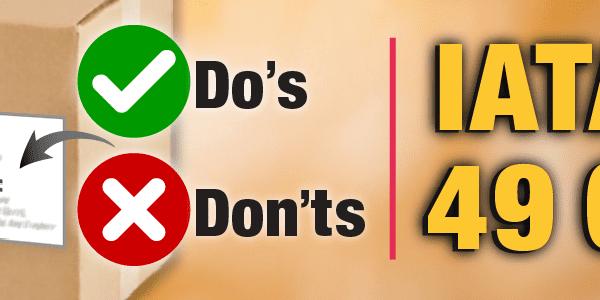This post was originally published in December 2016 and has been updated in November 2020 for accuracy.

When we think of UN Testing, several things may come to mind. We have the drop test, which evaluates the package’s ability to handle collisions, the vibration test, which simulates movements created by a motorized vehicle, the Cobb test, which is designed to ensure the fiberboard will not disintegrate when exposed to water, and the stacking test which checks the integrity of the package by stacking various weights over the top of it. However, those who want to test their packages under the ISTA 6-FEDEX-A requirements for packages 150 lbs. or under find it difficult to get a passing grade.
What Are The Differences?
Under standard testing, each sample is dropped only one time at a specific height for a total of 5 drops total from 5 different samples.
Under the ISTA 6-FEDEX-A testing, one complete sample is dropped ten times, focusing on every corner and edge of the package. Any significant leaking on either of these tests would result in a failure, making the ISTA testing very difficult to pass because of the number of drops. In addition, flat and elongated packages must go through a bridge or concentrated impact test procedure. This procedure consists of dropping a wooden box measuring 12″ x 12″ x 12″ dense wooden box weighing 21 lbs. on the midpoint of the package.
Under standard testing, the stacking test is usually employed. This 24-hour test in which the boxes must be subjected to the force applied to the top surface equivalent to the total weight of identical packages which might be stacked during transport. ISTA 6-FEDEX-A testing specifically requires the dynamic compression test. This consists of a computerized control system that exerts a specific amount of force upon the boxes to determine if any damage to the sidewalls occurs.
Although ISTA 6-FEDEX-A testing doesn’t require the Cobb moisture test, it does require a vibration test similar to standard testing. Both tests are completed by using a rotary vibration table designed to simulate the movements of motor vehicles. However, with ISTA 6-FEDEX-A testing, certain items require a vibration test from a Random Vibration Tester. This vibration testing reproduces three consecutive sequences at 15 minutes each of random vibration profiles that simulate air vibration and truck vibration.
If ISTA 6-FEDEX-A testing is in your future when shipping hazardous goods, you may find it challenging to find packaging that will pass the rigorous amount of drops and impact testing performed. Contact ICC Compliance Center for your custom packaging needs.
Stay up to date and sign up for our newsletter!
We have all the products, services and training you need to ensure your staff is properly trained and informed.
 Custom Packaging Design |
 UN Approved Packaging |
 Training Courses |





